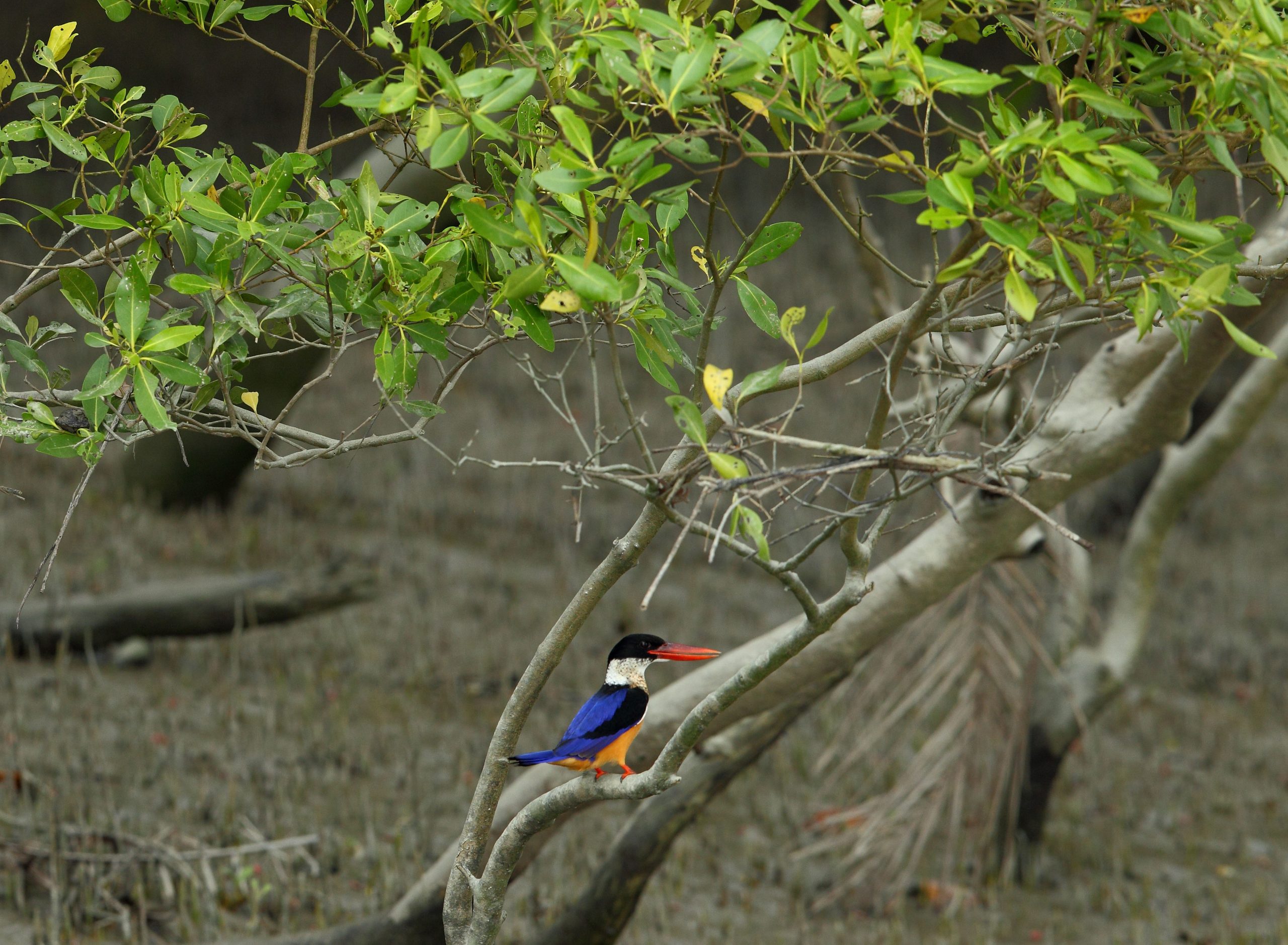Fifty years after the launch of Project Tiger in India, the country hosts 75% of the world’s wild tigers, with the numbers increasing from 2,967 to 3,167 from 2018 to 2022 according to the Status of Tigers 2022 report. The growth in numbers, though, hides the fact that tiger numbers are not rising everywhere in India, that other endangered species and forest dwelling human communities have been neglected in the single-minded focus on preserving the tiger.
Nonetheless, India’s success in raising the number of wild tigers is undeniable. “India is leading in conservation on the tiger front. Other countries – both tiger and non-tiger range countries – are looking towards India’s efforts and useful experiences in bringing up such numbers,” says Rajesh Gopal, secretary general of the Global Tiger Forum, an international body dedicated to conservation of wild tigers.
How Project Tiger started
The rise in numbers is a large change from 1972, when the first all-India tiger census revealed just 1,827 individuals, down from an estimated 40,000 in the early twentieth century. The Indian government responded by promulgating the Wild Life (Protection) Act in 1972, which provides for the protection of the country’s wild animals, birds, and plant species. Focussing on tigers in particular, the then Prime Minister, Indira Gandhi, launched Project Tiger, aimed at creating wildlife preserves for the big cat, with ‘core’ zones where no human activity was permitted, and ‘buffer’ zones surrounding them, where some permitted human activity was allowed.
In her inauguration message on March 26, 1973, Gandhi said, “The tiger cannot be preserved in isolation. It is at the apex of a large and complex biotope. It’s habitat, threatened by human intrusion, commercial forestry and cattle grazing, must first be made inviolate”. The key challenges were rampant poaching as well as habitat loss. By creating the ‘core’ zones where tigers could be monitored as well as their habitat protected, Project Tiger directly addressed these threats. Soon after, the population of tigers began to rise, and the number of tiger reserves has expanded from the initial 9 in 1973, to 53 in 2022.
It has not always been smooth sailing. In 2005 the project faced its worst-ever public catastrophe, when all the tigers in the Sariska tiger reserve – estimated at about twenty individuals, disappeared – presumably poached. In response, the Indian government Wild Life (Protection) Amendment Act, 2006. Until this amendment tiger reserves had been administrative units that channeled government funding, but now they became legally defined spaces as well. The amendment also established a National Tiger Conservation Authority (NTCA) which was empowered to check poaching, preserve the tiger population through the setting up of the Tiger Task Force, and to access funding the for relocation of villages from designated ‘protected areas’. The Tiger Task Force looked into major issues plaguing tiger conservation in India such as systemic institutional failure, misreporting of tiger numbers and need for a landscape approach to tiger conservation planning.
One of the recommendations of the task force was to use camera traps, geographical information system and global position system data. The difference in the quality of data from previous methods used until 2004 – which had relied largely on pugmarks, scat, and other signs of tigers – was significant.
“Project Tiger brought the entire forest department into modern scientific thinking,” says Qamar Quereshi, a nodal officer with the Wildlife Institute of India-NTCA Tiger Cell who was the leading scientist behind the monitoring technique, and one of the editors of the 2008 tiger monitoring report incorporating these advances.
The perpetual threat of poaching
Despite the changes, the threat of poaching remains. A 2022 report from the NGO TRAFFIC says 893 tigers were seized from illegal trade in India between 2000 and 2022. Data collated by the Wildlife Protection Society of India (WPSI) – a non-profit organisation which provides intelligence to the police to combat poaching – shows that dozens of tigers are still killed in most years.
“Many tiger deaths are reported each year owing to both organised and opportunistic poachers. Organised poaching thrives as long as there is a demand for tiger body parts outside the country,” says Tito Joseph, programme manager at WPSI. “Some tigers [also] become victims of herbivore poaching as they fall prey to the traps set up by villagers to catch herbivores.” Joseph acknowledges that there has been a marked improvement in curbing poaching during the last decade due to collaborative steps taken by the NTCA, The Wildlife Crime Control Bureau, the State Forest Department and the Ministry of Environment. However, he adds, there are still gaps when it comes to sharing information different state governments and with India’s neighboring countries.
“We need to share our information with the neighboring countries for each of these cases to be investigated thoroughly as to the reasons behind why such trade is happening, where the body parts are going and who is buying and so on,” explains Joseph. One way to do this, he says, is to use mechanisms under the Convention on International Trade in Endangered species of Wild Fauna and Flora – an international agreement between governments to eradicate illegal trade.
Such cooperation, though, is dependent on good state-to-state relation. “Transboundary information sharing is going well between India and Bhutan, and Bangladesh as well. However, our transboundary conservation with Myanmar is suffering coz of the recent coup,” says Jimmy Borah, senior manager of the legal and advocacy division of Aaranyak, a Guwahati-based conservation NGO.
Tiger recovery uneven across India
Political stability has an internal dimension as well. The 2022 ‘Status of Tigers’ report, notes that increases have mostly been in the western half of the country, while “Serious conservation efforts are needed to help tiger population recovery in Jharkhand, Odisha, Chhattisgarh, Telangana, and Andhra Pradesh.”
The central, eastern and southern states have also been the site for a long-running extreme Left insurgency, and this has created challenges for the enforcement of laws, including those related to tiger conservation, as a 2021 paper notes. Such problems are not unique to tigers, and in India’s northeastern states as well as in Nepal, militancy coincided with high levels of rhino poaching.
The true measure of conservation success and not mere increase in absolute numbers within certain reserves [if] the overall tiger occupancy in a larger landscape, or across India, is decreasing.Raza Kazmi, wildlife historian
“In 1972, these states accounted for nearly half of the country’s tiger population,” says Raza Kazmi, a wildlife historian.
Another problem highlighted by the report is that tiger populations in protected areas in areas like the Western Ghats landscape of southern India may be stable or increasing, but numbers are falling outside these reserves, where an estimated 35% of India’s tigers live. According to Kazmi, “the true measure of conservation success and not mere increase in absolute numbers within certain reserves [if] the overall tiger occupancy in a larger landscape, or across India, is decreasing.”
Saving the tiger from ‘development’
One major challenge is that, while the laws exist, political will to maintain large areas under forest cover comes in sharp conflict with developmental goals. In the case of Uttarakhand’s Rajaji National Park, the 2022 ‘Status of Tigers’ report, bluntly states that, “Linear infrastructure projects [like highways] in the congested corridor between western and eastern Rajaji have left the area functionally extinct for large carnivores and elephant movement, and the adoption of green infrastructure is needed to recover the tiger population in this fragmented landscape.”
The heart of the issue is the lack of political will [as well as] the steady dilution and weakening of lawsPrerna Bindra, conservationist
A report by the Legal Initiative for Forest and Environment states that the Standing Committee of the National Board of Wildlife (NBWL) had diverted 780.24 hectares from tiger habitats under nine projects meant for linear and hydropower projects in its four meetings in the first half of the year 2021 alone.
Prerna Bindra, a leading conservationist who formerly served at the Standing Committee for the NBWL, tells The Third Pole, “If tiger habitats continue to get fragmented, where will our tigers and leopards go? In the face of this, conflicts [with humans] will happen.” She adds, “The heart of the issue is the lack of political will [as well as] the steady dilution and weakening of laws, [like] the proposed amendment to the Forest (Conservation Act,1980); and institutions such as the National Board of Wildlife enabling destructive development projects in tiger habitats.”
Do other species benefit from tiger conservation?
Project Tiger was meant to help save the tiger, and through protecting the apex predator, the larger ecosystem. But a 2020 study found that tigers have dominated research attention since the country’s independence, and this has come at the cost of less charismatic species such as the desert fox, desert cat, striped hyena and the Indian wolf. These have not benefited as much by conservation laws.
Soumya Banerjee, a researcher who formerly worked in the Sunderban tiger reserve, tells The Third Pole that the issues involved are attention, funding, and habitats of other endangered species that overlap only in part with the areas protected as tiger reserves, he tells The Third Pole. “There are certain tiger reserves where parts of land are not occupied by the tiger such as dryland habitats. Species like the Great Indian Bustard or the lesser florican [that are also endangered species] thrive in these areas, but these are not accorded the same protection as the tiger.
“The primary issue is the forest department’s conservation management plan largely works in protected areas whereas there are endangered animals such as certain species of wolves and otters which thrive largely outside [them] and in habitats subject to anthropological disturbances,” says Banerjee.
He suggests that the plan should also incorporate, “lands located adjacent to tiger reserve and portions of lands located far away which are subject to various ecological and anthropological factors.” This would help species whose habitats do not exactly overlap those of tigers.
So far, though, the opposite seems to hold. One damning analysis of 43 mammal species listed in Schedule 1 (the most protected category) of the Wildlife Protection Act, 1972, by Rajkamal Goswami and Abi T Vanak underlines why paying attention to other species is so necessary. The analysis found that, of the 43 species, 37 (86%) remain under threat and 32 (74%) continued to decline, while Project Tiger progressed. Of these, they state, the Malabar civet is probably extinct.
“Tigers which are endangered species [but] the Chinese pangolin and the Great Indian Bustard are critically endangered species,” says Goswami, a senior conservation biologist with ATREE, a Bangalore-based conservation organisation. “In proportion to their current status… the amount of funds … directed towards their protection doesn’t even scratch the surface.”
Indigenous people continue to pay the price of conservation
If other species have been neglected in comparison, communities who traditionally lived in and around the tiger reserves find themselves in limbo. Akshay Chettri, a researcher at Kalpavriksh, a civil society organisation based in Pune that works on environmental and social issues, tells The Third Pole that out of 751 villages in critical tiger habitats identified for relocation, only 177 have been relocated. More importantly not all villages are in core areas as per NTCA data. “The government has given data for the core areas but relocations have taken place in buffer areas as well,” says Chettri. The Wildlife Protection Act, 1972 clearly mentions that the voluntary relocation of people needs to be done only in the identified core or critical habitats of a tiger reserve. Chettri says his documentation across 26 tiger reserves reveals that wherever relocations took place no compensation has been given, even though according to the Act, a family is supposed to receive up to INR 1.5 million (USD 18,300) in compensation.
In 2006, the same year the Indian government amended the Wild Life Protection Act, it also passed the landmark Scheduled Tribes and Other Traditional Forest Dwellers (Recognition of Forest Rights) Act, usually only referred to as the Forest Rights Act (FRA). The law was supposed to grant rights over forest lands to the 100 million indigenous people in India. In practice, the passage of the Act has done little to change the historical legacy of denying forest dwelling communities right to access the land they have inhabited in order to protect endangered animals.
“FRA is implemented just in 5-10 of [tiger] reserves and that too in some areas only,” Chettri tells The Third Pole. Customary forest rights and individual forest rights under the FRA, which would have allowed forest dwelling communities to gather wood, medicinal herbs, and aromatic plants from within the traditional boundaries of their villages, have largely been ignored.
Ambika Aiyadurai, a professor at the Indian Institute of Technology, Gandhinagar tells The Third Pole, “Any form of wildlife conservation through the protected area model has a human cost, especially paid by those living in and around these protected areas, who are often very marginalised, poor and with no bargaining power. While we celebrate the success of Project Tiger, we must acknowledge the social cost of the indigenous people and revisit the conservation model.”
Could community conservation areas be the way forward?
Critics of the current way that Project Tiger is being pursued, like Rajkamal Goswami and Ambika Aaiyadurai, argue that the government has failed to consider that there are examples in India of forests managed by local communities where tigers have thrived without people losing rights over their ancestral land. A case in point is the healthy tiger population in Arunachal Pradesh’s Dibang Valley which may host as many as 50 tigers. The valley is a wildlife sanctuary – which, unlike a tiger reserve, does not limit the entry of people in ‘core areas’.
Aiyadurai explains that the Mishmis look upon tigers as their elder brothers, and killing a tiger is seen as a grave crime unless in self-defence. Applying such taboos, the Mishmis have been protecting their forest under a community conservation model, and it was officially recognised as a wildlife sanctuary only in 1988. Recently the government has suggested that it might establish a tiger reserve there.
This has stoked concerns among the Mishmis of being cut off from their ancestral lands. Aiyadurai argues that the current model is already benefitting the tiger. “Community Conserved Areas [CCAs] are one of the possibilities to move beyond the state-controlled protected area model. The rise of CCAs, especially in northeast India, has reshaped conservation by challenging the power structure from the state.” Unfortunately, she tells The Third Pole, “Rigorous studies on their ecological and social impacts have been scarce.”




![A wild Bengal tiger in Bandhavgarh National Park in Madhya Pradesh [Image by: Mark Smith/Alamy]](https://dialogue.earth/content/uploads/2015/01/wild-tiger-300x200.jpg)

![Tourists on elephants take photos of rhinos in Kaziranga National Park [image by: Sadiq Naqvi]](https://dialogue.earth/content/uploads/2020/06/tourists-on-elephants-take-photos-of-rhinos-in-kaziranga-file-photo-Nov-2019-300x225.jpeg)



